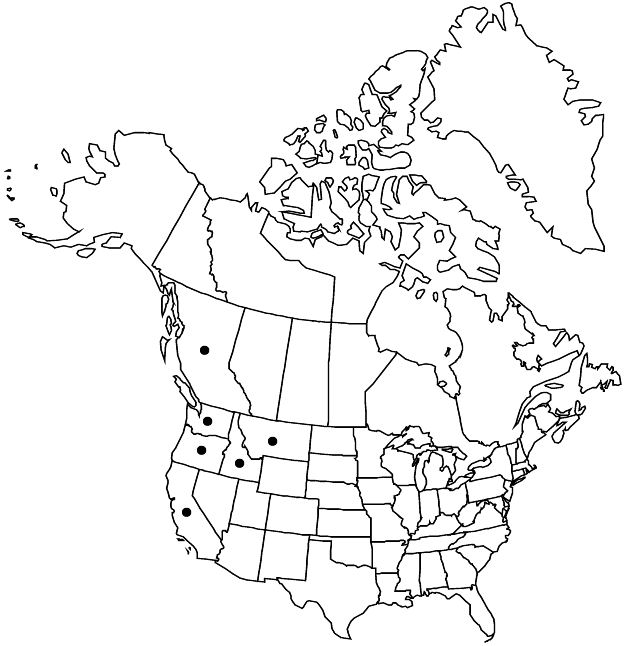Frangula purshiana subsp. purshiana
Plants 1–12 m, usually treelike. Twigs red to brown, glabrescent. Leaves deciduous (often persistent on seedlings and small saplings); blade widely oblong to widely elliptic, 6–15 cm, herbaceous, base mostly rounded to subcordate, margins irregularly toothed or entire, apex obtuse to truncate, surfaces not papillate, sparsely hairy to glabrous, not glaucous adaxially when fresh.
Phenology: Flowering (Feb–)Mar–Jul.
Habitat: Coniferous forests, forest edges, deciduous woodlands, stream banks, coastal sage scrub, non-serpentine substrates.
Elevation: 0–2000 m.
Distribution

B.C., Calif., Idaho, Mont., Oreg., Wash.
Discussion
A. R. Kruckeberg (1996) noted that a population similar to subsp. purshiana was discovered on serpentine slopes in the Wenatchee Mountains of Washington. In their shrubby habit, these plants appear to be differentiated from non-serpentine populations elsewhere in the Pacific Northwest, which are treelike in habit. The Wenatchee plants retain their shrubby habit when garden-grown from seeds.
The bark of subsp. purshiana is a valuable medicinal crop for its cathartic properties. The tree attracts an abundance of bees and other pollinators during its long flowering season, and the fruits are an important food for songbirds, pileated woodpeckers, band-tailed pigeons, and other wildlife.
Selected References
None.